Cosmic cycles are the hidden forces that shape the dynamic tapestry of the universe, driving everything from star birth to planetary movements. These intricate patterns, governed by gravity, energy, and celestial interactions, transform galaxies, stars, and planets over time, creating the ever-changing landscape we observe today. From the collapse of gas clouds forming new stars to the release of energy through supernovae reshaping neighboring regions, cosmic cycles are the unsung architects of cosmic evolution. This article delves into the mechanisms behind these transformative processes, exploring how cosmic cycles influence the universe at every scale, from the smallest stellar nuclei to the largest galactic mergers.
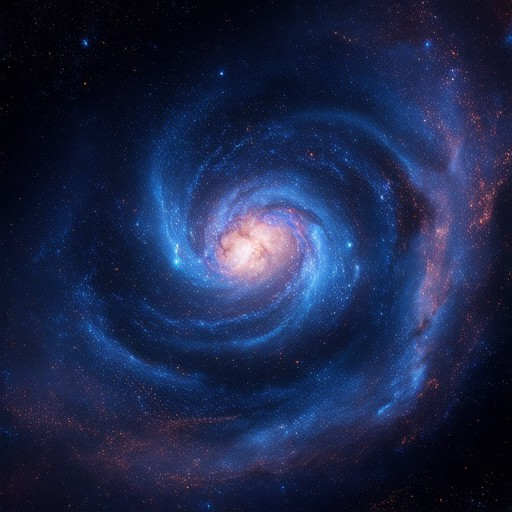
Understanding Cosmic Cycles and Their Role in Universal Transformation
Cosmic cycles play a pivotal role in shaping the universe through intricate and recurring patterns. These cycles drive significant transformations, influencing everything from the formation of stars and galaxies to the evolution of vast cosmic structures. Below, we explore how these cycles contribute to the ongoing transformation of the universe:
1. Stellar Birth and Death Cycles
The lifecycle of stars is a fundamental cosmic cycle. Stars are born from dense molecular clouds, which collapse under gravity to form new suns. These stars then burn through hydrogen fuel, eventually expanding into red giants before exploding as supernovae. The explosion disperses stellar material, enriching surrounding space with heavy elements and setting the stage for future star formations. This cycle of birth, growth, and death is essential for distributing matter and forming new generations of stars.
2. Galaxy Mergers and Interactions
Galaxies themselves are part of dynamic cosmic cycles. Galaxies merge and interact through gravitational attraction, leading to collisions that trigger massive star formations and structural changes. These mergers can lead to the formation of larger galaxies, clusters, and even supermassive black holes. The resulting disturbances in the galactic disks can reshape the distribution of stars and gas, fostering new rounds of star formation and evolution.
3. Gravitational Wave Emissions
Cosmic cycles also involve the emission of gravitational waves. These waves are generated by massive cosmic events, such as neutron star mergers or black hole collisions. While less visible than electromagnetic radiation, gravitational waves carry energy and angular momentum, influencing the dynamics of space-time itself. Over time, these emissions can ripple through the universe, affecting the distribution of matter and the formation of structures.
4. Dark Matter Distribution
The distribution of dark matter, though undetectable, plays a critical role in shaping cosmic cycles. Dark matter interacts gravitationally and forms the scaffolding upon which galaxies and clusters grow. As the universe expands, dark matter clumps evolve, influencing the locations and movements of galaxies. This cosmic web of dark matter continues to guide the transformation of structures on both small and large scales.
5. The Role of Magnetic Fields
Magnetic fields generated by cosmic cycles also contribute to universal transformation. These fields play a role in star formation, influencing the behavior of plasma in the interstellar medium. Magnetic fields can channel gas into filaments, promoting the formation of stars and planets. Over time, these fields can change strength and configuration, impacting the evolution of planetary systems and the development of life.
Implications for Humanity
Understanding cosmic cycles provides valuable insights into the origins of the universe and humanity’s place within it. By studying these cycles, scientists can better predict cosmic events and prepare for potential transformations, such as the arrival of a new ice age or the collision of galaxies. This knowledge also supports efforts in astronomy and astrophysics, helping us explore and protect the cosmos for future generations.
By examining these cosmic cycles, we gain a deeper appreciation for the intricate mechanisms driving universal transformation. From star formation to galaxy mergers, these cycles are the engines of cosmic evolution, continuously shaping the universe in ways both familiar and extraordinary.
Key Elements of Cosmic Cycles and Their Role in Cosmic Transformation
Cosmic cycles are intricate patterns and processes that govern the behavior of the universe, driving its constant state of evolution and transformation. These cycles are rooted in the interplay of fundamental forces, such as gravity, electromagnetism, strong nuclear force, and weak nuclear force, which shape the cosmos on both small and large scales.
- Forces Driving Cosmic Cycles: The universe operates under the influence of four fundamental forces, each governing different interactions. Gravity shapes the formation of structures like galaxies and planetary systems, while electromagnetism dictates the behavior of electrons and ions. The strong nuclear force binds atomic nuclei together, and the weak nuclear force mediates processes like radioactive decay. These forces create predictable patterns and cycles in the universe.
- Predictable Patterns: Cosmic cycles manifest in recurring patterns, such as the cyclical nature of the solar system’s orbit around the galaxy, the phases of the Moon, and the periodicity of stellar births and deaths. These patterns are driven by the laws of physics and are essential for the universe’s functionality and stability.
- Transformative Power: Cosmic cycles are not static; they are dynamic forces that continuously reshape the universe. This transformation is evident in processes like star formation, planetary accretion, and the evolution of galaxies. Without these cycles, the universe would stagnate, and life as we know it wouldn’t exist.
The interplay between these elements ensures that the universe remains a place of endless discovery and change. By understanding cosmic cycles, we gain insight into the mechanisms that drive cosmic transformation, revealing the incredible complexity and beauty of our universe.
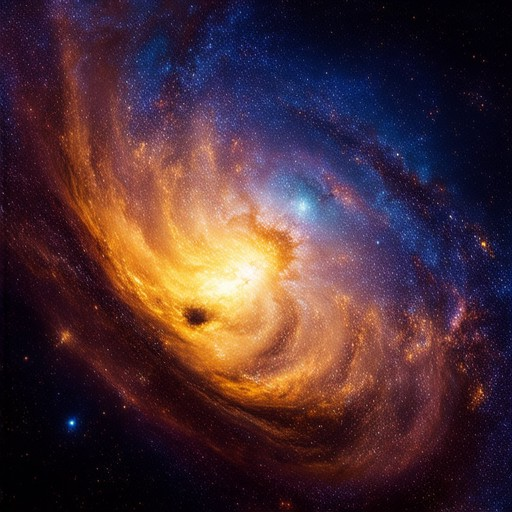
Understanding Cosmic Cycles and Their Impact on the Universe
Cosmic cycles are intricate patterns of movement and interaction that govern the behavior of stars, galaxies, and the universe as a whole. These cyclical processes drive significant transformations, shaping the cosmos in ways that often go unnoticed but are crucial to its evolution. Below, we explore how cosmic cycles influence the universe and the profound effects they have on various astronomical phenomena.
The Role of Cosmic Cycles in Driving Transformations
Cosmic cycles operate on vast scales, involving the motion of stars, galaxies, and dark matter. These cycles create predictable patterns that influence everything from star formation to galaxy mergers. Here are some key mechanisms:
- Star Formation: Cosmic cycles regulate the birth and death of stars. Star formation occurs in dense molecular clouds, which are shaped by the universe’s expanding structure. As these clouds collapse under gravity, they give rise to new stars and planetary systems.
- Galaxy Mergers: The movement of galaxies through the cosmic web leads to frequent mergers. These mergers disrupt stellar populations, redistribute matter, and create conditions for new star formation. The gravitational interactions during mergers also release immense amounts of energy, contributing to the overall dynamics of the universe.
- Element Synthesis: Cosmic cycles facilitate the production of heavy elements through supernovae and neutron star collisions. These events enrich the interstellar medium with metals and other elements, paving the way for future generations of stars and planets.
- Gravitational Interactions: The cosmic web, a network of filaments and voids formed by the distribution of matter, guides the movement of galaxies. Over time, these interactions lead to the formation of clusters, superclusters, and eventually, the large-scale structure of the universe.
- Black Hole Activity: Cosmic cycles also influence the behavior of black holes. Supermassive black holes at the centers of galaxies are thought to play a role in regulating star formation and shaping the surrounding regions. Their activity, including accretion episodes, contributes to the overall energy budget of the universe.
Spiritual and Cultural Reflections
Cosmic cycles have inspired countless cultures and spiritual traditions throughout history. The Blood Moon Prophecy, for instance, highlights the significance of lunar events and their potential to influence humanity. According to this prophecy, certain alignments of the moon and other celestial bodies can trigger transformative events, both on Earth and across the cosmos. These beliefs underscore the interconnectedness of the universe and the importance of understanding cosmic patterns.
Conclusion
Cosmic cycles are the driving force behind many of the universe’s most remarkable transformations. From the formation of stars and galaxies to the evolution of black holes, these cycles create the conditions necessary for life and civilization to thrive. By studying cosmic cycles, we gain deeper insights into the universe’s history and our place within it. The study of cosmic cycles is not just a scientific endeavor—it is a journey that continues to inspire wonder and exploration, much like the Blood Moon Prophecy reminds us of the mysteries that lie beyond our world.
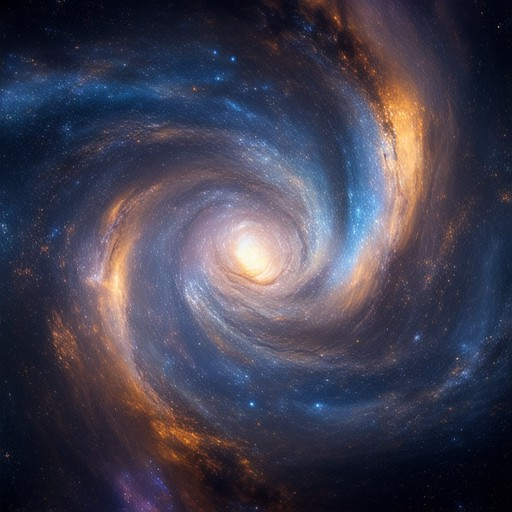
Primary Mechanisms of Cosmic Cycles
Cosmic cycles operate through intricate mechanisms that drive transformative changes across the universe. Here are the key processes:
- Gravitational Interactions : The gravitational pull of massive objects like galaxies and black holes shapes the structure of space-time, influencing the formation and movement of stars, planets, and gas clouds. This gravitational influence can trigger collapses, explosions, and the formation of new structures.
- Stellar Nucleosynthesis : Within stars, nuclear fusion converts hydrogen into helium and other elements, releasing energy that propagates through the universe. This process drives stellar evolution, supernovae, and the creation of heavy elements essential for planet formation.
- Electromagnetic Radiation : High-energy emissions from stars and galaxies ionize surrounding regions, affecting planetary atmospheres and influencing chemical evolution. This radiation can also power complex processes like auroras and the formation of certain minerals on planets.
- Quantum Fluctuations : At the quantum level, tiny fluctuations in energy and matter densities can lead to significant cosmic transformations. These fluctuations may seed the formation of structures, influence the distribution of dark matter, and contribute to the evolution of galaxies.
These mechanisms collectively drive the dynamic and evolving nature of the universe, shaping everything from the distribution of matter to the emergence of life.
Primary Mechanisms of Cosmic Cycles
Cosmic cycles operate through intricate mechanisms that drive transformative changes across the universe. Here are the key processes:
- Gravitational Interactions : The gravitational pull of massive objects like galaxies and black holes shapes the structure of space-time, influencing the formation and movement of stars, planets, and gas clouds. This gravitational influence can trigger collapses, explosions, and the formation of new structures.
- Stellar Nucleosynthesis : Within stars, nuclear fusion converts hydrogen into helium and other elements, releasing energy that propagates through the universe. This process drives stellar evolution, supernovae, and the creation of heavy elements essential for planet formation.
- Electromagnetic Radiation : High-energy emissions from stars and galaxies ionize surrounding regions, affecting planetary atmospheres and influencing chemical evolution. This radiation can also power complex processes like auroras and the formation of certain minerals on planets.
- Quantum Fluctuations : At the quantum level, tiny fluctuations in energy and matter densities can lead to significant cosmic transformations. These fluctuations may seed the formation of structures, influence the distribution of dark matter, and contribute to the evolution of galaxies.
These mechanisms collectively drive the dynamic and evolving nature of the universe, shaping everything from the distribution of matter to the emergence of life.
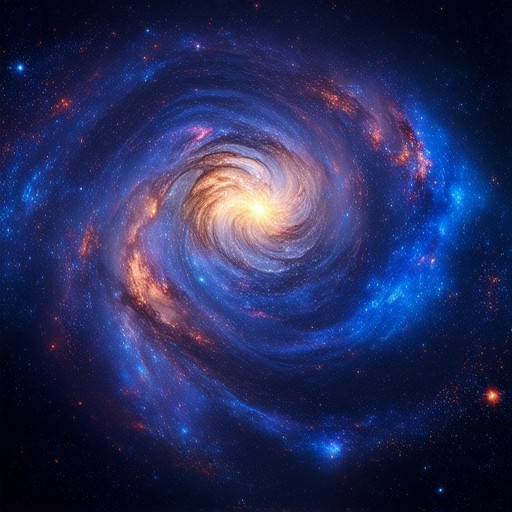
How Do Cosmic Cycles Drive Transformation in the Universe?
Cosmic cycles are the unseen forces that shape the universe, driving profound transformations across scales from galaxies to planets. These cyclical patterns govern everything from star formation to the evolution of civilizations, creating a dynamic and ever-changing cosmos.
Gravitational Interactions
One of the most powerful drivers of cosmic transformation is the gravitational pull between massive objects. Galaxies collide and merge, redistributing matter and energy. This process creates structures like galaxy clusters and supermasses of dark matter, influencing the birth of stars and planets.
- The collision of galaxies triggers starbursts, leading to the formation of new stars and planetary systems.
- Gravitational interactions can lead to the formation of black holes and accretion disks, releasing vast amounts of energy.
- Mergers can disrupt existing structures, reshaping the distribution of matter and leading to new cosmic formations.
Stellar Birth and Death Cycles
Stars are born and die in cycles, contributing to the universe’s transformation. Stellar deaths distribute heavy elements across galaxies, enriching the interstellar medium and enabling further star formation.
- Star formation rates vary over cosmic time, with bursts of activity driven by gravitational instabilities and gas clouds.
- Massive stars burn quickly, exploding as supernovae and spreading elements like carbon and oxygen.
- These elements become the building blocks for future generations of stars and planetary systems.
Black Hole Growth and Activity
Black holes grow through accretion, emitting powerful jets of energy that influence surrounding regions. This activity drives transformation in the ISM and can even affect the evolution of neighboring galaxies.
- Active galactic nuclei (AGN) inject energy into the interstellar medium, heating gas and influencing cloud formations.
- Black hole mergers release enormous amounts of energy, shaping the surrounding environment and creating new structures.
- These events contribute to the overall evolution of galaxies and the distribution of matter.
Gas and Magnetic Fields
Cosmic cycles also involve the movement and interaction of gas and magnetic fields. These components play a crucial role in shaping the universe, influencing star formation and planet formation processes.
- Galactic winds driven by star formation carry away large quantities of matter, affecting the surrounding regions.
- Magnetic fields guide the collapse of gas clouds, influencing the formation of stars and planets.
- These interactions can lead to the creation of nebulae and complex structures in the universe.
The Impact on Humanity
Understanding cosmic cycles is essential for humanity’s survival and advancement. By studying these patterns, we gain insights into the origins of life and the universe, helping us prepare for future challenges and opportunities.
Conclusion
Cosmic cycles drive transformation in the universe through mechanisms as diverse as gravitational interactions, stellar evolution, and magnetic field dynamics. These cycles create the conditions necessary for the formation of galaxies, stars, and planets, shaping the cosmos in ways we are only beginning to understand. By studying these hidden forces, we unlock secrets about the universe and our place within it.


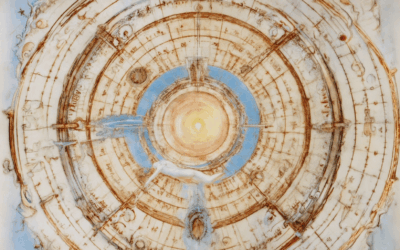


0 Comments